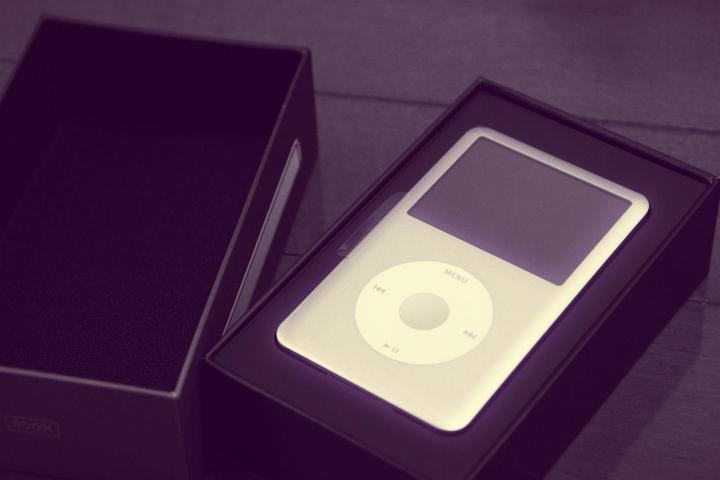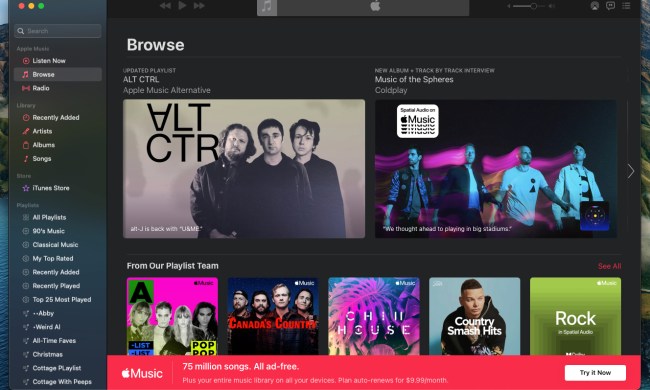
For some of us, though, that thrill of discovery ultimately brings us every bit as much joy as the music we seek. In fact, if anything, my own music listening has just grown weirder in my post-collegiate years. The cuts have grown deeper, the chords more dissonant and the artist names more obscure. The iPod Classic was made for me.
And to be, honest, I’m genuinely saddened by its passing. I couldn’t tell you how many iPods I’ve owned over the years, but I bet if dug through enough drawers and boxes, I’d be able to excavate a half dozen click wheels of various generations. For whatever reason, it just never felt right to throw them out, even years since their screens went black a final time. I suppose they just fought too valiantly for too long and deserved a proper gadget burial beneath stacks of old writing clips and income tax reports.
The plucky little Classic hung in there, surviving generation after generation of Touch refresh.
This time out, the familiar clickwheel was flanked by an anodized aluminum body. It was a departure from the long-standing shiny white or black bodies, but it was a classy one. It wasn’t the only distinction, of course. The old standby was no longer the star of the show. The spotlight belonged to a new iPod. The touch. An appified touchscreen take on the line —and, really, at its heart, a crippled version of the iPhone. Apple had taken its hot new product, pulled out cellular radio and was selling it as the hot music newness.
Ol’clickwheel, meanwhile, was saddled with the word “Classic,”surely a sign that the company was ready to put the line out to pasture. Each year, at the various tech sites that have employed me over the years, we’d scour Apple’s site post keynote to see if the click ax had finally dropped. Amazingly, however, the plucky little Classic hung in there, surviving generation after generation of Touch refresh.

Clearly I wasn’t the only music obsessive clinging to the little hard drive, taking comfort each time that tiny hard drive whirred to a start at the beginning of my morning commute. I took solace in the knowledge that, even as my subway train plunged into the subterranean depths below New York City where no cell signals could penetrate, I’d still have access to every song Stephen Malkmus had ever penned and each syllable the RZA ever rapped.
I recall a story that John Roderick once told on his excellent podcast Roderick on the Line (which I listened to, naturally, on one of many loyal iPods) about former Death Cab for Cutie guitarist (and indie rock superproducer) Chris Walla. Upon hearing the news that Converse was moving its manufacturing to China, Walla went out and bought as many cream color Chuck Taylor low top as he could get his hands on. He kept them in an undisclosed location in order to swap out a new pair each time he’d burned through another pair —a relatively frequent occurrence as any loyal wearer of Converse All-Stars will tell you.
Add buying a million iPod Classics to the long list of things I’ll do when I win the lottery.
I realized something recently —even before all of this sad news out of Cupertino. As music grows more accessible and discovery more passive through the proliferation of streaming services, perhaps it won’t be favorite albums and records that we hold onto with dear life. Maybe for many of us, the familiar comfort in the face of perpetual change will come in the form of the gadgets we just can’t abandoned.
Who among us, early adopters included, hasn’t held onto a device well after planned obsolescence with the knowledge that future generations will never quite fulfill the continued needs of the past? Maybe our iPods and laptops will be our Billy Joels and Bruce Springsteens. All right, maybe not. But with the iPod Classic now gone, part of me feels as if one my favorite bands just broke up. There are other devices out there and second-hand resellers, sure, but everyone knows that reunion shows just aren’t the same thing.
And I don’t care what the naysayers and touchscreeners say. iPod Classic, as far as I’m concerned, you went out on top. Thanks for all the gigabytes.


